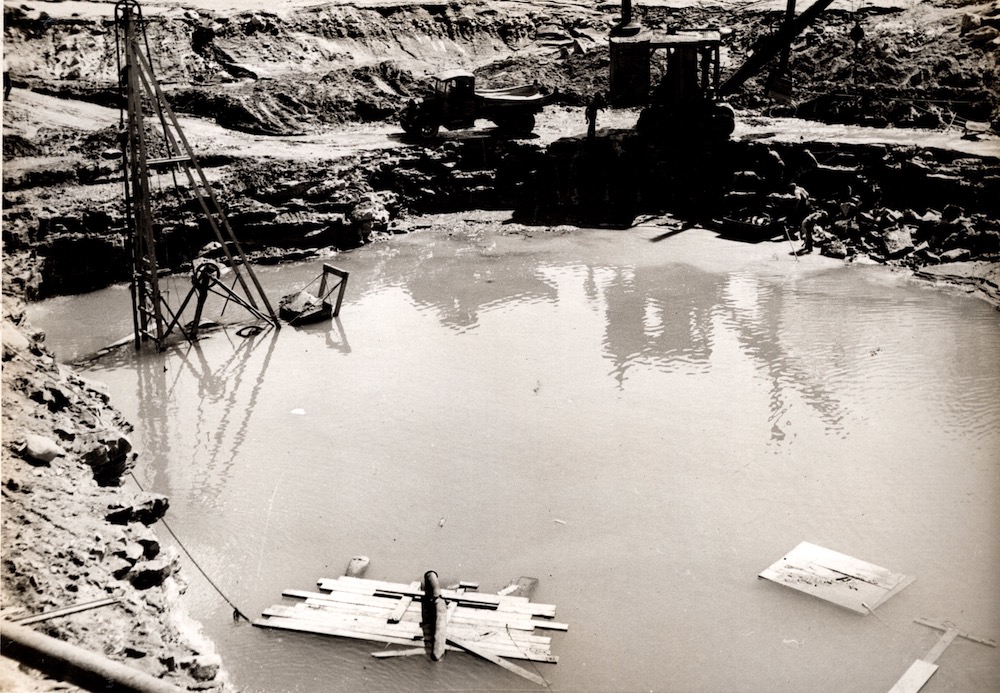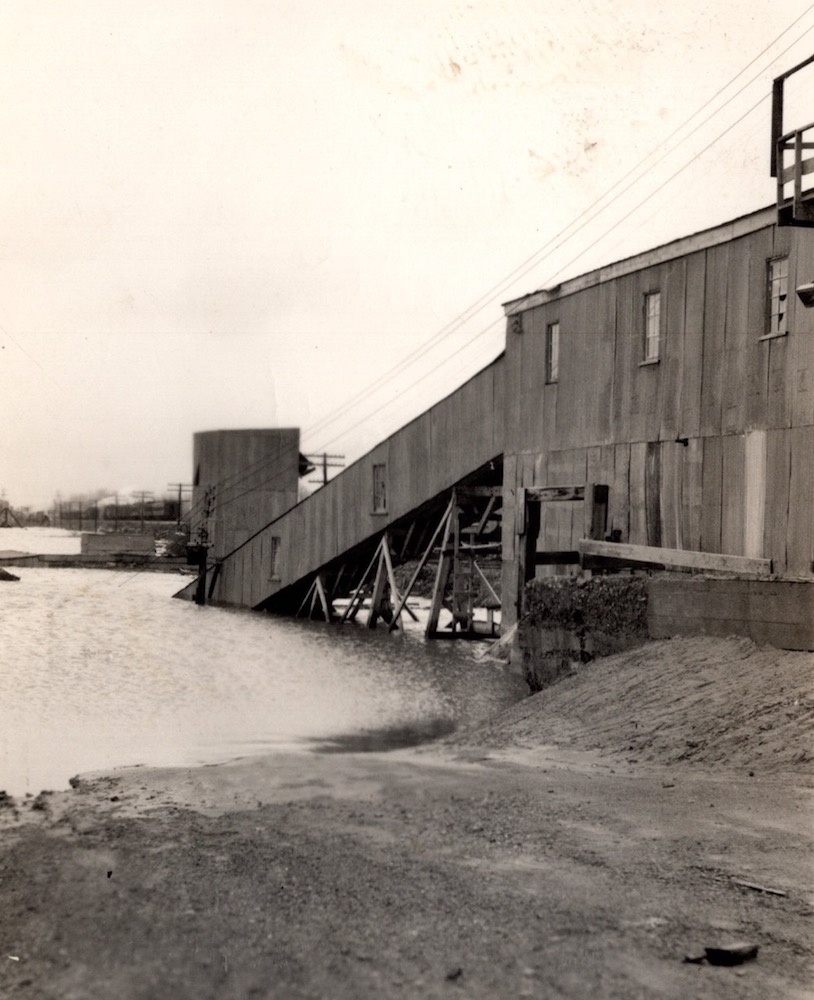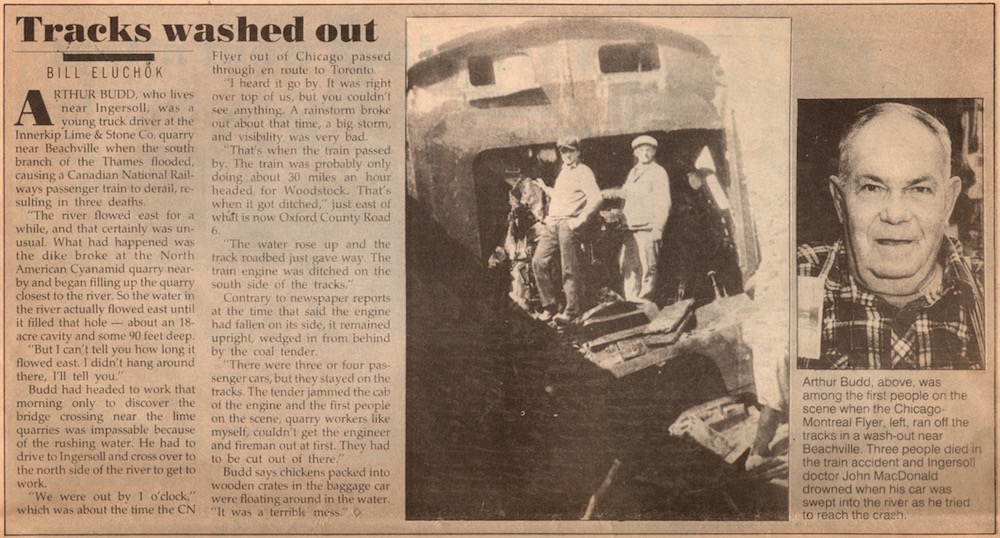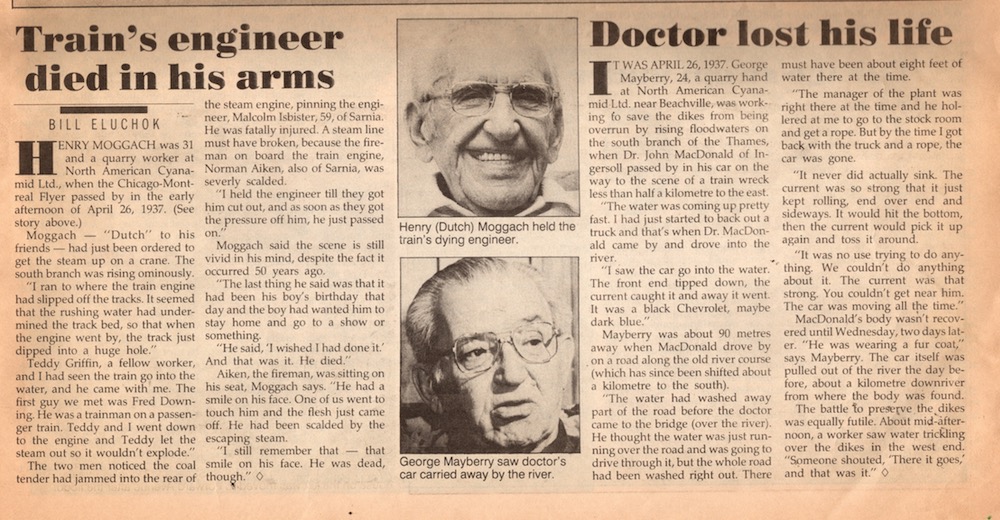A Hiccup: The Unruly River
From April 20-26, 1937, Beachville faced heavy rainfall. Innerkip Lime and Stone took swift precautions by relocating pumps and equipment to higher ground and sending workers home. Other sites underestimated the flood, relying on dykes, resulting in severe damage. Arthur Budd, who worked as a truck driver at the quarry, recalled:
The river flowed east for a while, and that certainly was unusual. What had happened was the dike broke at the North American Cyanamid quarry nearby and began filling up the quarry closest to the river. So the water in the river actually flowed east until it filled that hole – about an 18-acre cavity and some 90 feet deep.
The flood undermined a Canadian National Railway track bed by the quarry, derailing a passenger train. Three or four passenger trains remained on the track. Quarry workers were the first to aid trapped passengers. Sadly, the train’s engineer, a fireman on the locomotive, and one other lost their lives in the wreck.
George Mayberry, a worker at North American Cyanamid, recalled working to save the dykes from being overrun by floodwater and seeing Dr. John MacDonald of Ingersoll drive into the river, attempting to get to the wreck to assist those injured. He said:
I saw the car go into the river…The water had washed away part of the road before the doctor came to the bridge…he thought the water was just running over the road and was going to drive through it, but the whole road had been washed right out…The manager of the plant was right there at the time and he hollered at me to go to the stock room and get a rope. But by the time I got back with the truck and a rope, the car was gone.
The dykes were gone shortly after as well.
In the wake of the flood, the Thames River was rerouted at the quarry sites in the 1940s, and new building projects began.





